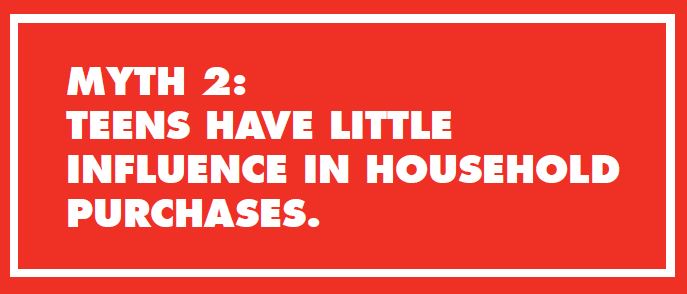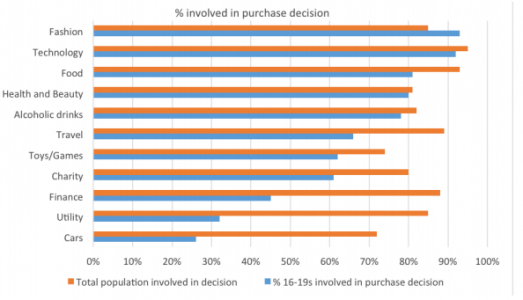
Who is the most important person to consider and target in a brand’s marketing campaigns?
The person who will potentially be buying that product or service, surely? The main shopper, right? After all, they’re the ones making all the decisions, holding the cash and are therefore the people we need to communicate to. Yes?
Well, in short… no.
Our The Future of Generations research showed that teenagers don’t just sit back and get what they’re given. They are in fact hugely influential across a number of household purchase decisions whether that be fashion, food and even cars.

We compared 16 – 19-year-olds with the total population, looking at the percentage of those involved in purchase decisions across key categories. We found that fashion and tech are where teens are claiming to hold the most influence with over 90% saying they have involvement in the purchasing decisions of both of these categories. They’re certainly a persuasive bunch.
Although categories with greater longer-term investment i.e. cars, utilities and finance have less involvement from the younger age demographic, there is still a proportion who do claim influence and shouldn’t be ignored e.g. 1 in 5 teens say they have influence in the purchase decision for a car.
Things switch up a bit when we look at the main decision maker.
Teens tend to be joint decision makers rather than taking sole responsibility so this opens the door for further investigation into their level of and approach to influence.
We have already noted key attitudinal differences when it comes to teens and the rest of the population as outlined in the exploration of their attitudes to social and ethical issues in Myth 1.
Brands who wish to target a family unit need to understand behaviours of the family make-up and the influence different members have on purchases when developing their marketing campaigns. When brands understand the actions and behaviours of all members of the purchasing journey, they can target effectively to improve their reach and cement their place within the home.
For example, researching teens rather than just the main shopper will show that teens are more likely to be passionate about travel and experiences, more open to buying cars online and consider financial services brands via word of mouth. This will only encourage strategic planning and targeting and further improve campaign success.




